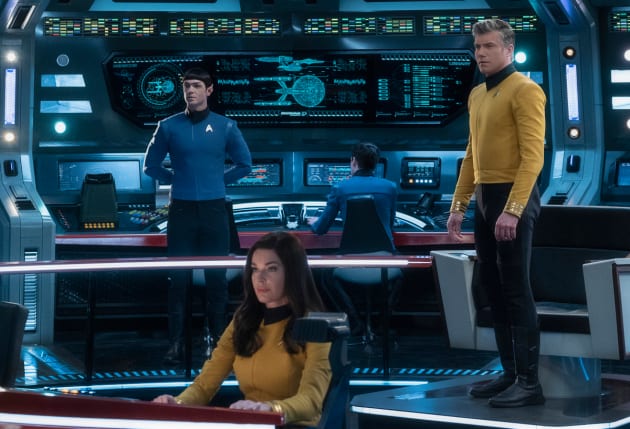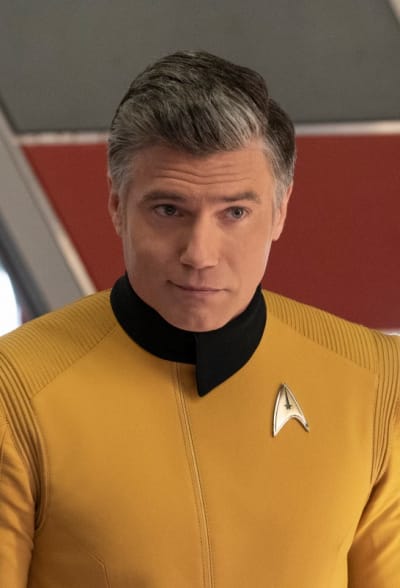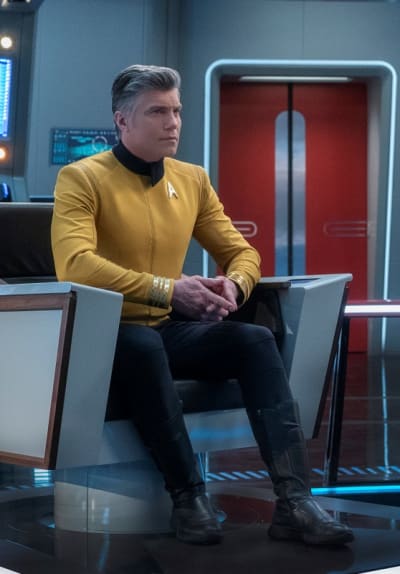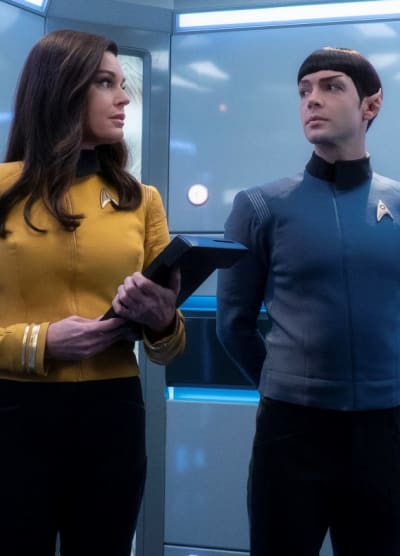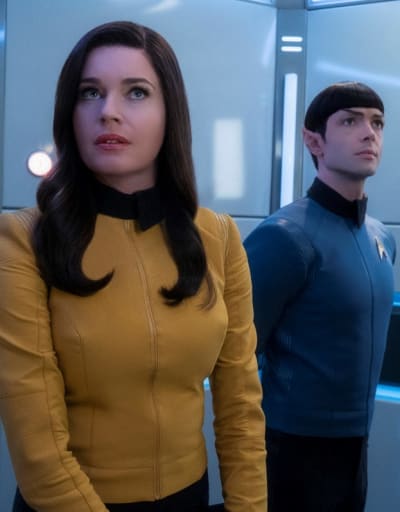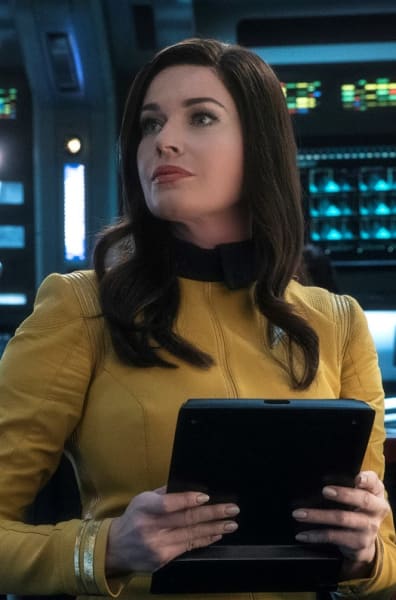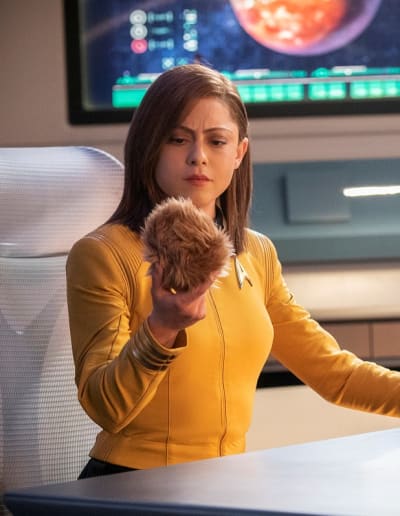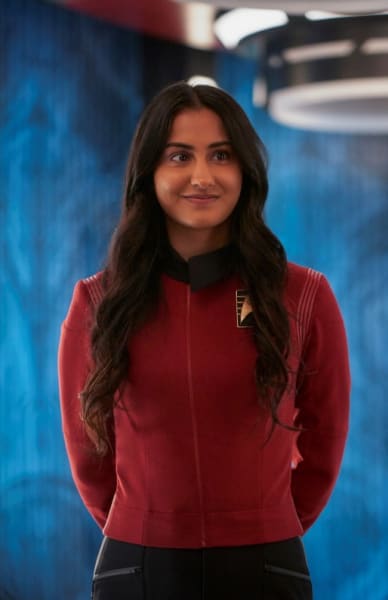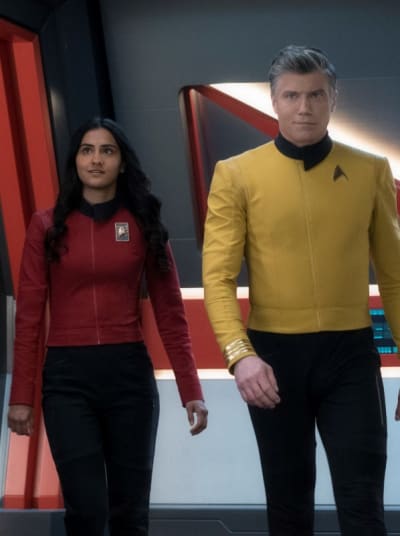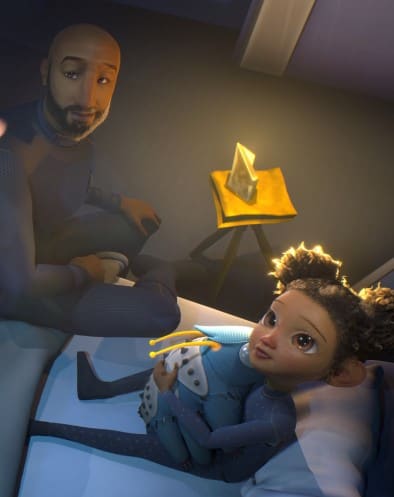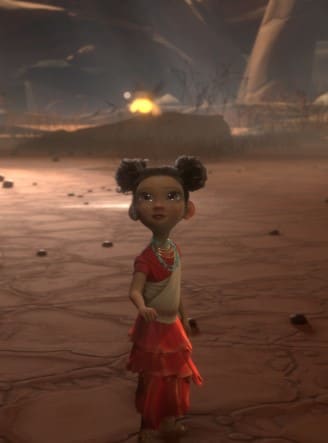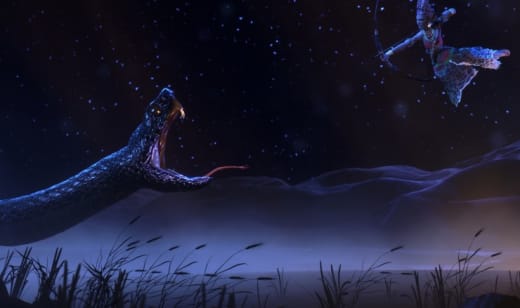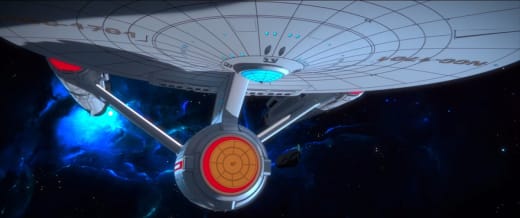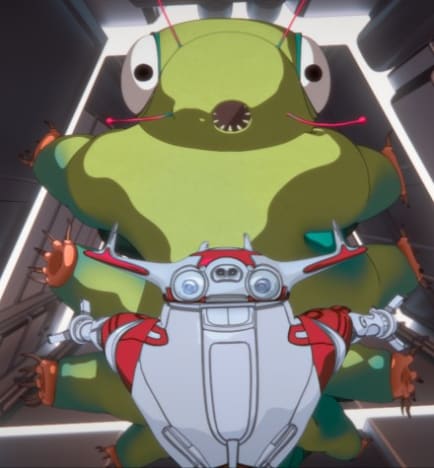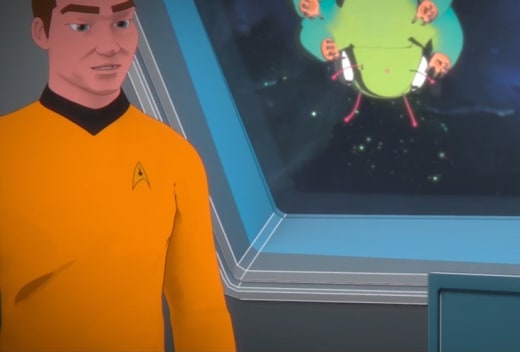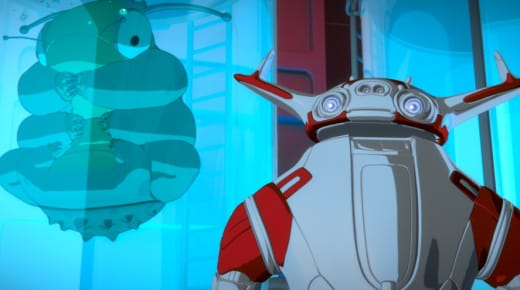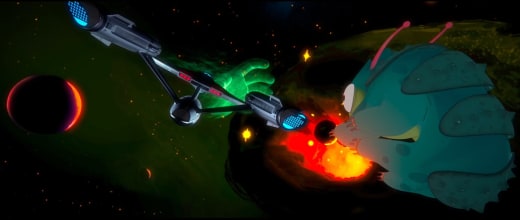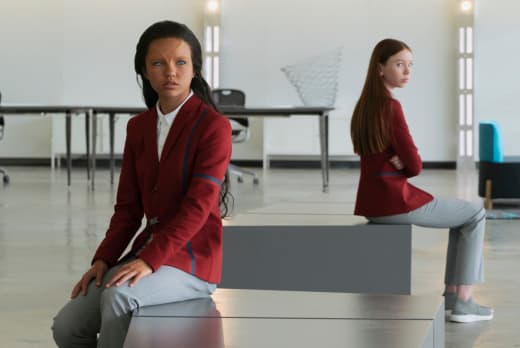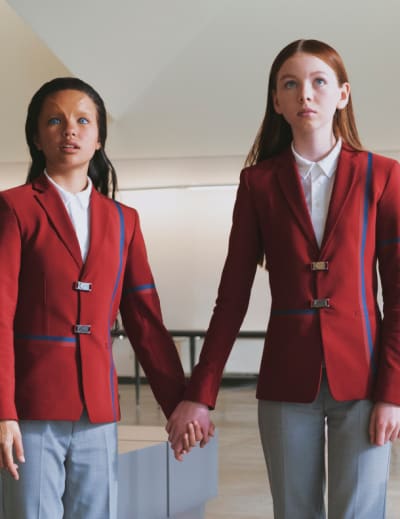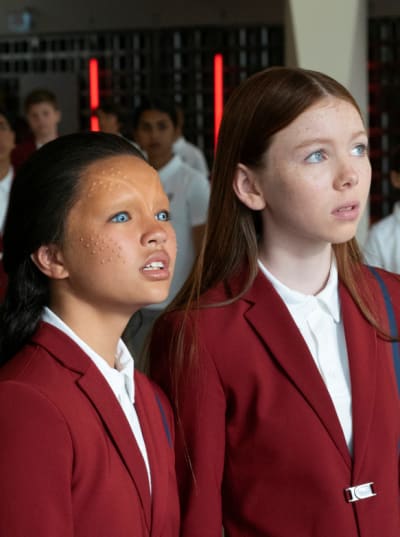Products You May Like
During the 2018-19 season hiatus, Star Trek fans were blown away by the production value, narrative depth, and pure guilty pleasure of Star Trek: Short Treks Season 1.
Although Star Trek: Short Treks Season 2 offers more episodes, several are considerably shorter in length and lighter in content.
As a whole, they maintain the visual excellence of Season 1 and even stretch the innovation of the series with two animated episodes.
What the new season does best is provide many fan-pleasing Easter Eggs, homages to well-known classic incidents, and a chance to hang out with the newest incarnations of Spock, Number One, and Pike.
However, the jury’s still out on the insights it provides on the highly-anticipated new series, Star Trek: Picard, the upcoming third season of Star Trek: Discovery, and the new animated series, Star Trek: Below Decks.
Where the first season of mini-episodes was, for the most part, intrinsic to understanding much of the developments on Star Trek: Discovery Season 2, this season seems to focus on interesting but not pivotal backstory.
Episode 1: Q & A
After playing central roles on the U.S.S. Discovery for Star Trek: Discovery Season 2, it was hard to hear that Pike, Number One, and Spock would be reboarding the Enterprise and not returning for Season 3.
To make the parting more bearable, the trio makes appearances on both Star Trek: Short Treks Season 2 Episode 1 and Star Trek: Short Treks Season 2 Episode 3 and Pike shows up briefly on Star Trek: Short Treks Season 2 Episode 2.
On the premiere episode, Spock boards the Enterprise for the first time and immediately ends up stuck in a malfunctioning turbo lift with Number One where they pass the time learning about each other.
Chit-chat isn’t really a Vulcan’s wheelhouse, so Number One does the sensible thing and issues a direct order to Mr. Spock to ask her questions until she tells him to stop.
What follows is the most intense session of speed dating ever, with Number One’s efficiency matched against Spock’s powerful Vulcan intellect and ability to generate a seemingly infinite and random series of inquiries.
The process does what it’s meant to do — break the ice between the two extremely professional, incredibly smart, and user-focused individuals.
Not only do they discover they have a lot in common, but the ordeal in the lift drags on long enough for them to share some pretty personal insights.
A quick Internet dive reveals that the idea spawned from writer Michael Chabon’s desire to reconcile Number One’s appearance on the first pilot of OG Star Trek, “The Cage,” alongside a smiling Mr. Spock with the series that came afterward.
There, a far more restrained Mr. Spock assumed Number One’s position as second in command — and much of her personality, as well.
What “Q & A” does beautifully in 14 short minutes is predict the amazing relationship between the two, which viewers never really get to see.
Number One is and always has been a woman AND Starfleet officer who knows her worth.
That she can reach out to mentor and bond with a colleague who is just as capable but lacks the experience she has doubly proves that she is truly the ideal “Number One” to Pike’s Captain.
Episode 2: The Trouble With Edward
Like Star Trek: Short Treks Season 1 Episode 4 — “The Escape Artist” — Season 2 serves up a helping of preposterousness with this origin story of the infamous Tribbles, the universe’s cutest biological weapon.
And we can tell Star Trek: Short Treks are gaining status with the talent the projects are attracting.
Alita: Battle Angel herself, Rosa Salazar, playing the fresh-faced, newly-minted Captain Lynne Lucero of the U.S.S. Cabot, a science vessel charged with alleviating starvation on Pragine-63, a planet near Klingon space.
It’s her bad/worst luck that her crew includes Edward Larkin, an “unorthodox” thinker who doesn’t take well to being told his idea to modify the DNA of the low-spawning Tribble organism to create a protein food source is not a viable option.
All hail, H. Jon Benjamin, the titular voice of Archer and Bob’s Burgers and now memorialized in Star Trek canon as Larkin, the progenitor of Tribbles as we know (and fear) them.
It is Starfleet, as we have NEVER seen before (not even in the Mirror Universe). Starfleet officers and scientists are understood to be the future of the Hogwarts Houses — brave, hard-working, clever, and political — depending on the character.
Larkin blows all of those preconceptions out the warp drive.
He is petty and juvenile and just awful. But, unfortunately for the ill-fated U.S.S. Cabot — and the planet below — and, it can be assumed, nearby Klingon settlements, he’s actually quite a capable scientist.
Disobeying a direct order, he incorporates his DNA with the Tribbles, turning them into a planet-ending, born-pregnant infestation.
It is an enormously entertaining train-wreck of a Trek experience.
The image of Larkin standing triumphant, screaming, “I am not the dumb one,” as the exploding mass of Tribbles behind him is about to bury him in an avalanche of twitchy, squeaky, furry bodies will be burned into my brain for many a stardate.
Episode 3: Ask Not
I have a few quibbles with Star Trek: Short Treks Season 2 Episode 3 in that, considering holodeck technology was two Trek generations away, how exactly did they create the simulation test Cadet Sidhu conquered?
The easiest answer is that she didn’t know the room she was in was a specially-designed test room and the explosions and impacts were pyrotechnics built into the walls.
Still, that seems a little contrived.
Of course, it was all a Number One scheme to test the mettle of a potential new Enterprise crew member.
Following on “Q & A,” Number One and Spock’s close bond is still apparent when they greet Sidhu in the transporter room.
Spock’s comment on how one comes to expect “no mercy” from Number One is met with a distinctly arched eyebrow side-eye from his superior.
Sidhu’s responses to Pike in the simulation not only reveal her stalwart adherence to Starfleet protocols but her knowledge of those protocols and when they can be applied.
In stark contrast to the late Edward Larkin, Sidhu gets every button pushed in the process of the simulation — fear for her husband’s safety, trauma from surviving a previous Tholian attach, intimidation in the face of direct orders from Captain Pike — and manages to hold her ground.
The episode’s title — “Ask Not” — refers to John F. Kennedy’s famous speech in which he challenges Americans to look first to themselves when seeking what makes a great country.
“Ask not what your country can do for you. Ask what you can do for your country.”
It’s Sidhu’s staunch ethical standard that earns her a place on the Enterprise’s engineering team.
But if every new hire was made to pass one of Number One’s simulation tests, I’d say the Enterprise’s threshold for entry may be more than the job’s worth to some.
Episode 4: The Girl Who Made the Stars
At the very start of Star Trek: Discovery Season 2 Episode 1, Michael Burnham, in voiceover, recounts a legend from the /Xam Abathwa tribe of Africa which explains the stars of the Milky Way were the result of a girl who “dug her hands in the wood ash and threw it into the sky.”
In this, the first animated Star Trek episode in 45 years, we see that Michael heard the story from her father on nights when storms frightened her as a child.
The tardigrade stuffy is a nice touch.
(For those interested in BTS tidbits, Michael’s father is voiced by the same actor who portrayed him on Star Trek: Discovery Season 2 Episode 11, Kenric Green, the real-life husband of Sonequa Martin-Green, aka Michael Burnham.)
With shades of Moana in the trope of the brave explorer child who will lead her people out of their stagnating safety, “The Girl Who Made the Stars” can easily be interpreted as Michael’s catalyst mythology.
In casting herself as the girl in the folktale, she envisions herself facing down the darkness to create the light.
Encountering new entities and experiencing strange environments is just the start for her.
With beautiful animation and lyrical storytelling, this VERY SHORT Short Trek hints at incredible new adventures for our intrepid heroes aboard the U.S.S. Discovery.
It’s an elegant tie-in to both the far past (Burnham’s childhood) and the near past (“Brother”), as well as a potential future for Star Trek: Discovery.
After all, just as the girl grew to become a warrior and leader for her people after making the stars to light the night sky, we know that Burnham and her crew are out there, somewhere in time and space, overcoming the obstacles so that they can come home after saving the universe from Control.
Episode 5: Ephraim and Dot
Now this episode is a giant batch of Star Trek: The Original Series Easter Eggs to make the fandom rise up and cheer.
Starting with the animated black-and-white introduction of a “Starfleet Science” film and a “docile” tardigrade named Ephraim, we get a mycelial-network-travelling micro-animal’s view of the Enterprise.
As established by Ripper’s storyline on Star Trek: Discovery Season 1 and the use of his DNA to guide the spore drive, time and space mean nothing to the mycelial sub-verse or its inhabitants.
As Ephraim runs riot through the Enterprise’s inner (and outer) workings, we assume that Dot, the worker robot, is just one robot chasing a would-be stowaway.
But all Dot-7s are identical and programmed to be identically inhospitable to unauthorized visitors.
Since Ephraim’s Enterprise explorations lead her through several identifiable and iconic moments of Star Trek: The Original Series, hinting that she’s not linearly experiencing time, isn’t it possible that every time a Dot-7 spots her and gives chase, it could just be the most recent Dot-7 to encounter her?
Alternatively, it could be the same Dot-7 — supposing that the Enterprise only has one left at the time Ephraim first gets sucked on board — but he’s linearly experiencing time and this tardigrade just randomly appears every few months and leads him on a merry chase.
It’s quite the odd couple pairing with Ephraim just looking to lay some eggs and hatch them and Dot looking to evict one and all.
Meanwhile, Trekkers are just going NUTS over the events occurring in the background.
An animated version of Khan Noonien Singh!
Tribbles!
A shirtless, sword-wielding Sulu!
The chase is fast-paced and comical with Ephraim desperate to stay near her eggs, and Dot determined to get rid of her.
Honestly, Ephraim is so cute it’s pretty hard to see Dot’s perspective on this conflict.
Of course, once Dot succeeds in jettisoning Ephraim, it’s up to the little tardigrade to catch up to the ship and that’s when the visual references start to fly.
For those paying attention, Ephraim manages to glimpse the Enterprise’s encounters with the Hand of Apollo, the Planet Killer doomsday machine, a Tholian web, the giant Abraham Lincoln created by the Excalbians, and the U.S.S. Reliant.
With the Enterprise’s self-destruction over the Genesis Planet, it appears that Ephraim’s efforts have failed, her eggs lost to the explosion.
And her furious attack on Dot had the same understandable visceral rage that we saw when Culber finally took out his frustrations on Ash Tyler on Star Trek: Discovery Season 2 Episode 8.
I can honestly say that, between Ripper and Ephraim, tardigrades are the most sympathetic non-humanoid, non-speaking characters on my TV these days.
Despite Dot proving the hero, I’m left wondering if he later got rescued by another ship or if he just ended up space junk after Ephraim took her babies off into the final frontier.
Episode 6: Children of Mars
The season finale is enigmatic in its purpose.
The schoolroom rivalry between Lil and Kima is an unexplained dislike between two young people with absentee family.
Their conflicts are petty, intense, and both subtle and dramatic.
Pretty much exactly what high school was like when I was growing up, not sure about yours.
Whether Lil is taking out her disappointment at her father’s cancellation on Kima or there’s a larger backstory, it’s clear these two know each other enough to know exactly how to get under the other’s skin.
When the synths strike Mars, the tragedy of losing their parents in the same attack draws them together.
In the most straightforward terms, Lil and Kima are probably representative of many of the people affected by the synth attack, differences forgotten in the light of greater issues.
More importantly for keen-eyed viewers, the presence of Admiral Jean-Luc Picard on the news feed hints that the synths will be something the new series will be dealing with.
The more subtle message carried by this episode applies to our world today.
War’s victims are not limited to those who die in attacks. Those left behind — many innocent in the scope of war — are left to remember, suffer, and mourn.
Star Trek: Short Treks Season 2 is a menagerie of adventures, characters, contexts, and events.
It’ll be very interesting to see how they tie into this year’s many Star Trek series.
What do you think will be the most significant Short Trek this round?
What will you be watching for?
Does anyone know where to get a tardigrade stuffy? Asking for a friend.
And we sure would appreciate a follow of our new Twitter account as we work to rebuild our audience!
@TVFanatic
Diana Keng is a staff writer for TV Fanatic. Follow her on Twitter.
